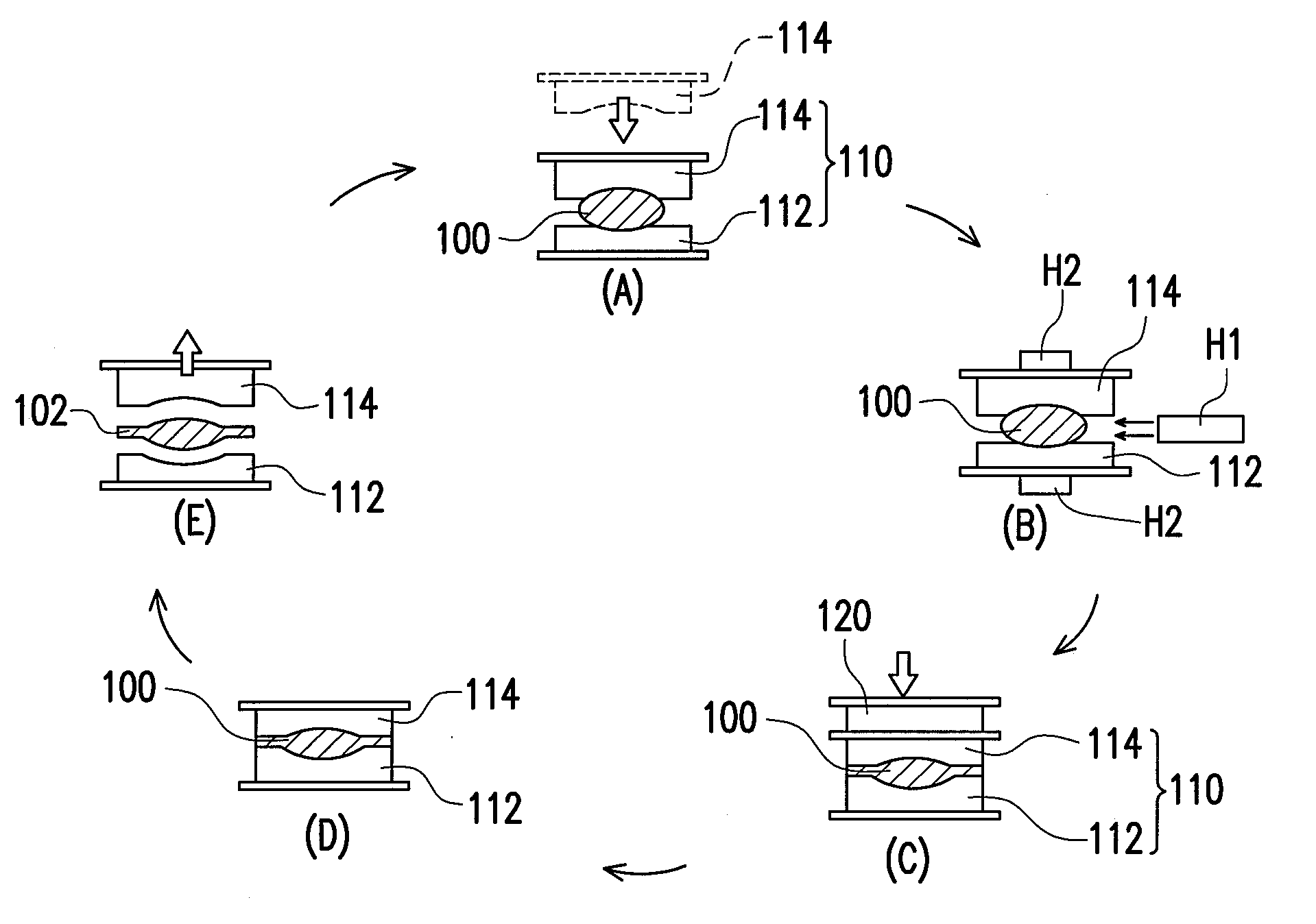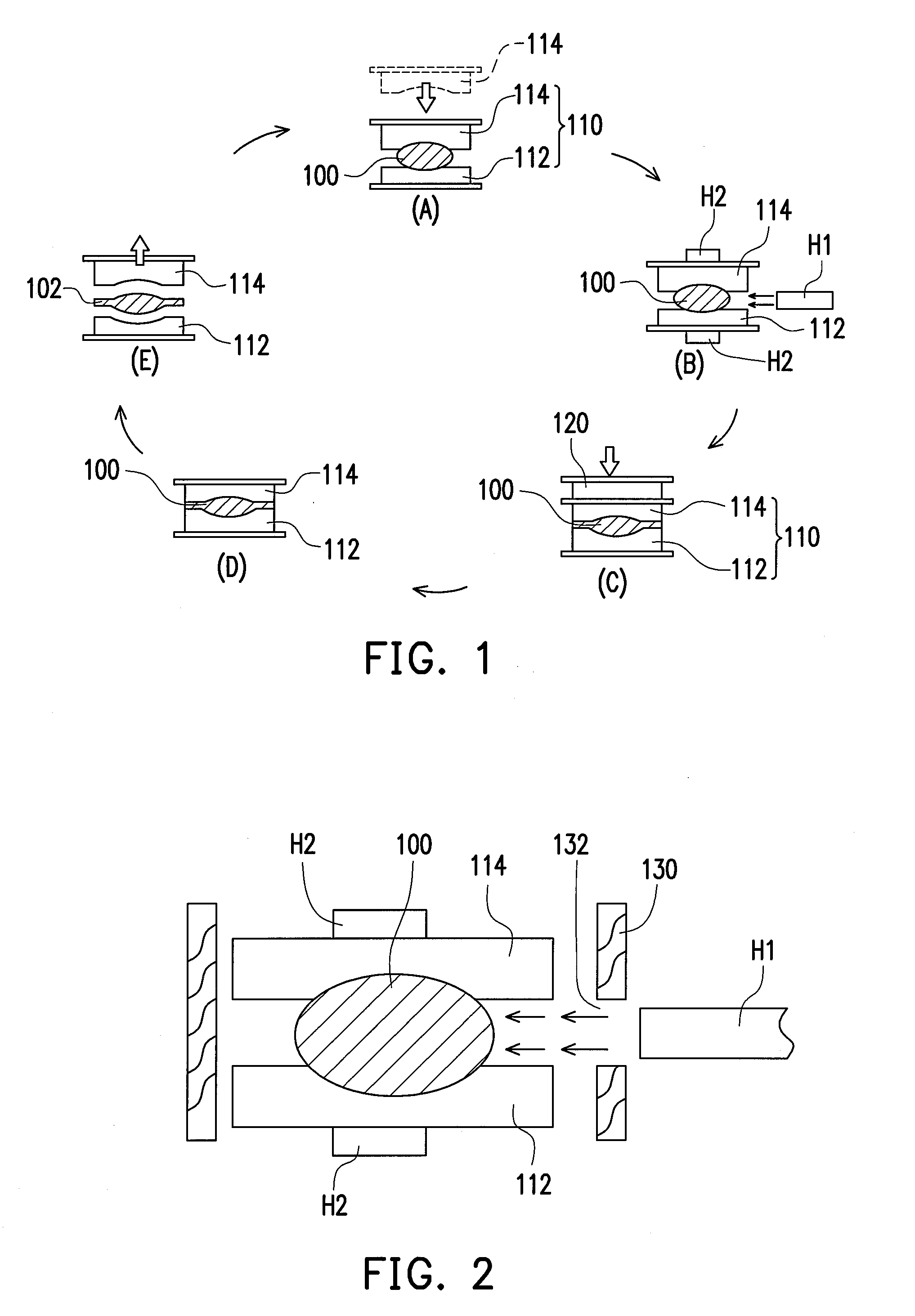Heating process and apparatus of molding glass
- Summary
- Abstract
- Description
- Claims
- Application Information
AI Technical Summary
Benefits of technology
Problems solved by technology
Method used
Image
Examples
Embodiment Construction
[0019]FIG. 1 is a flow chart of a method and apparatus of molding a glass. FIG. 2 is a schematic diagram of a heating device of molding a glass according to an embodiment of the present invention.
[0020]Referring to FIG. 1, the method of molding a glass mainly comprises a pre-step (A), a heating step (B), a pressuring step (C), a cooling down step (D), and a mold release step (E) etc. . . . First, at the pre-step (A), a spherical glass preform (referred as glass hereafter) 100 is placed on a lower die 112 of a mold 110 and then, the glass 100 is fixed between an upper die 114 and the lower die 112 using the upper die 114. Next, the glass 100 is placed in a heating chamber (not shown). A heater or another heat source is fixed on the mold 110 preferably at a position as close to the glass 100 as possible. Then, at the heating step (B), the glass 100 is directly heated and softened by using a first heat source H1. The mold 110 is directly heated to reach a working temperature by using a...
PUM
| Property | Measurement | Unit |
|---|---|---|
| Temperature | aaaaa | aaaaa |
| Pressure | aaaaa | aaaaa |
| Heat | aaaaa | aaaaa |
Abstract
Description
Claims
Application Information
 Login to View More
Login to View More - R&D
- Intellectual Property
- Life Sciences
- Materials
- Tech Scout
- Unparalleled Data Quality
- Higher Quality Content
- 60% Fewer Hallucinations
Browse by: Latest US Patents, China's latest patents, Technical Efficacy Thesaurus, Application Domain, Technology Topic, Popular Technical Reports.
© 2025 PatSnap. All rights reserved.Legal|Privacy policy|Modern Slavery Act Transparency Statement|Sitemap|About US| Contact US: help@patsnap.com


